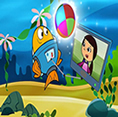We don't always realize it, but the truth is that in our daily lives we live with a very wide variety of texts.
When we went out into the streets we came across posters, billboards, pamphlets. At home, we watch TV news or read newspapers in our city, chat with our friends on the Internet, consult the instruction manual for handling a new toy, and more.
The most important thing of all is that we know that no matter what the type of text is, they all have a purpose, a goal.
For example: the newspaper serves to inform us about events related to society; e-mail is a source of contact we establish with friends and family; the instruction manual guides us on the correct way to use an electronic device, a video game; the poster informs us about the film being shown; the pamphlet encourages us to learn about a new product sold in a store; among other purposes.

So, this variety of texts that we know is called “textual genres”, because each one has an importance for us. And most importantly: They have their own characteristics regarding the language and the form that compose them.
For example, an ad has a language with the objective of convincing, of encouraging the purchase of a certain product; a report is usually written in clear language, trying to make the reader understand perfectly what it is about; a cake recipe teaches us step by step how to accomplish the task.
Email already has a reduced language, as we have the opportunity to converse with several people at the same time.
As you can see, there are an infinite number of texts, and they are classified according to their purpose. As we expand our contact with reading, it becomes easier to identify them.
By Vânia Duarte
Graduated in Letters
Kids School Team



